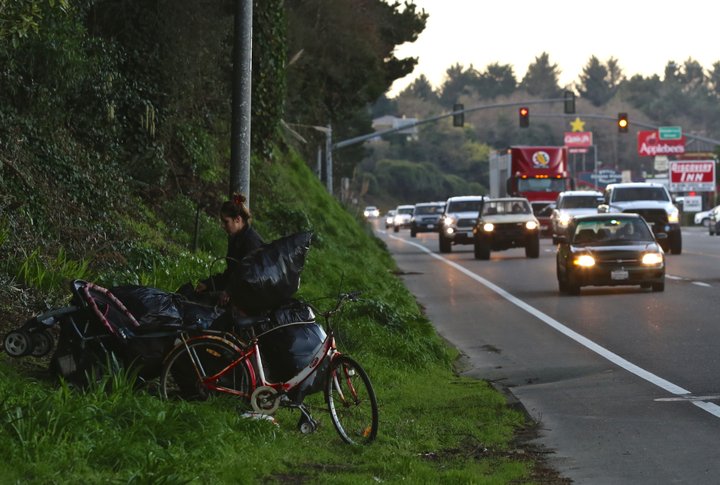
Photos by Andrew Goff.
It was still dark and frigid this morning when roughly 140 volunteers gathered in communities from Garberville to McKinleyville and then, in small groups and pairs, fanned out into neighborhoods, parks, greenbelts and riverbanks searching for the county’s homeless population.
As in many other counties across the state and the country, Humboldt County today conducted its “Point-in-Time” count, a collaborative census of “sheltered and unsheltered homeless people” on a given night (last night, in this case).
In Eureka, volunteers met before dawn at a command center of sorts that had been established inside a modular unit, part of the Koster Street complex owned by the Humboldt County Department of Health and Human Services (DHHS).
At the front of the room stood a large, generously bearded man named Robert Ward, who works as the Point-in-Time count coordinator and an administrative analyst with DHHS. A flatscreen TV on the wall displayed a map of Eureka, subdivided into numbered sections, and as volunteers filed through the door Ward assigned them areas to canvass, loaded them up with cloth shopping bags (each of which had been supplied with a new pair of socks, a bottle of water, snacks, and informational material from the county), and sent them on their way.
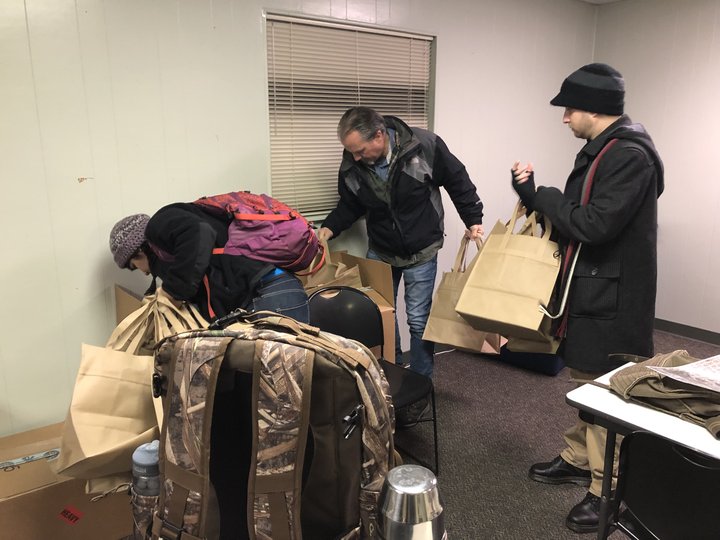
Volunteers stock up on bags to hand out to unsheltered people during the county’s biennial “Point-in-Time” (PIT) homelessness count. | Photo by Ryan Burns.
Ward, sipping coffee from a small thermos, used a dry erase marker to write the names of volunteers on a whiteboard next to the TV, scrawling in the rectangles of a hand-drawn grid showing where each set of volunteers had been deployed.
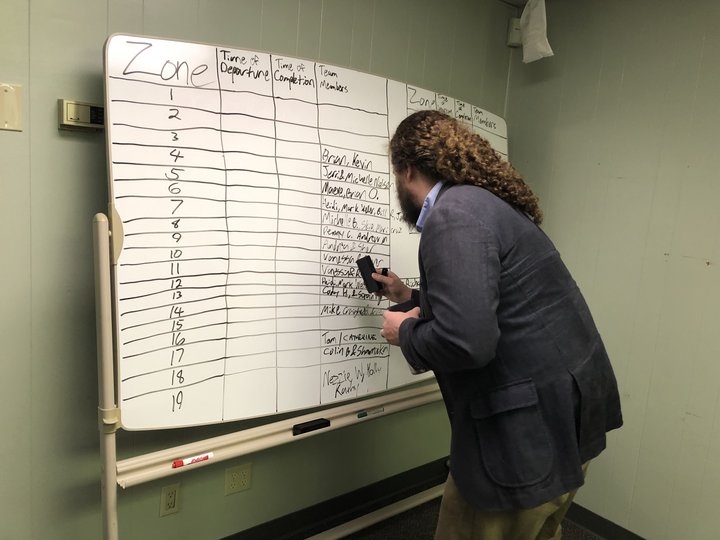
The last time such a count was conducted, two years ago, it found that the number of homeless people in the county had dropped from 1,180 in 2015 to just 618, a decline of nearly 40 percent. (The 2017 figure was later revised to 759.) When the subsequent report was released, many were skeptical about the results as well as the methodology,
Ward said he and other organizers are expecting a more accurate count this year.
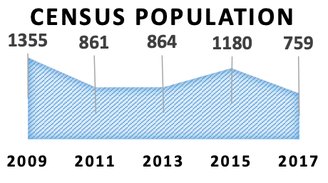
Humboldt County’s homeless Point-in-Time Count results. | Chart courtesy DHHS.
“We do have quite a different approach than we had in 2015 and earlier years,” he said. For previous counts, following rules laid out by the Department of Housing and Urban Development (HUD), volunteers were only allowed to include people who agreed to answer fairly extensive surveys.
“We got a lot of reports after 2017 that people just didn’t want to do the surveys,” Ward said. “They didn’t want to answer any questions at all, so they didn’t get counted.”
This year’s effort, which was organized through the multi-agency Humboldt Housing and Homeless Coalition, is using what’s called the “blitz method,” in which teams are deployed to discrete areas and volunteers are allowed to base their count on observation alone. This means that homeless folks who decline to answer survey questions can still be included in the tally. Volunteers can even count cars or structures such as tents or makeshift shelters if it looks like people are living in them.
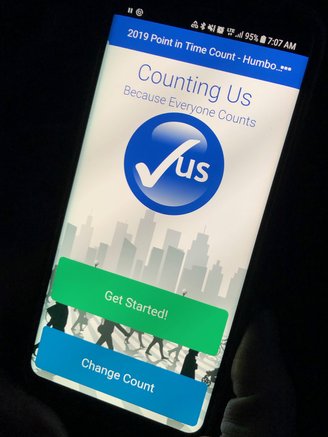
This year’s count is also more technologically advanced. Volunteers, who attended training sessions or watched an instructional video over the past week, were armed with a smartphone app called Counting Us, which allowed them to survey homeless people with less paperwork.
The accuracy of the Point-in-Time count can have serious impacts on the county’s efforts to solve homelessness, in part because grant funding is often awarded based on those numbers.
Survey questions concern such topics as mental illness, substance abuse, demographic data and each person’s length and frequency of homelessness.
As the morning wore on, Ward could see the results displayed on the flatscreen TV as they were reported in real time. He said preliminary numbers for the “unsheltered” population could be available as early as this afternoon, while the sheltered homeless — those staying in various shelters across the county — will take a bit longer to compile.
Across town, at the back end of the Applebee’s parking lot, a group of volunteers from the local Family Resource Center had set up a service area with long folding tables where DHHS employees sat surveying homeless people from a nearby encampment, many of whom had been attracted by the smell of fresh coffee, burbling chili and warm cornbread.
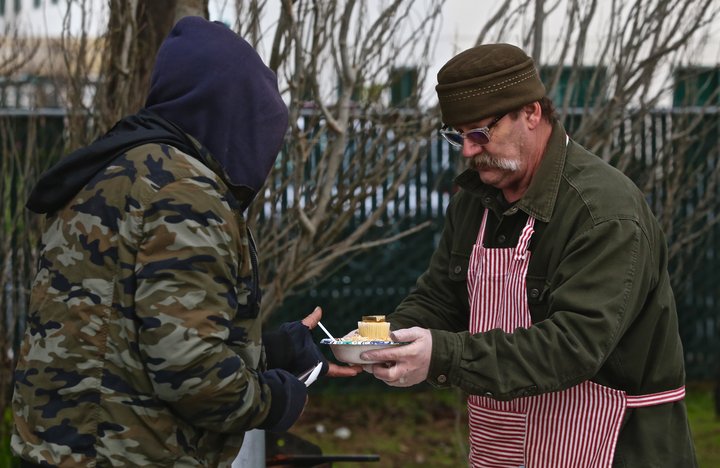
Volunteer Darrell Burden serves up chili and cornbread to a homeless man in Eureka during the county’s biennial “Point-in-Time” homelessness count. | Photo by Andrew Goff.
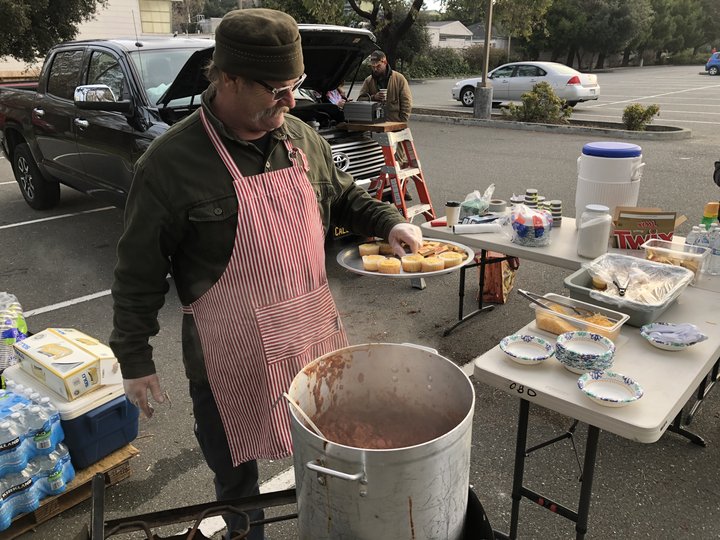
Photo by Ryan Burns.
Volunteer Heidi Benzonelli said she and her crew started working at 3 a.m., checking places where people frequently sleep in their cars.
“We [counted] over 23 people just from Truesdale [south of the Bayshore Mall] to Del Norte [just south of Costco] that were obviously [homeless] — you could see the person sleeping in the car,” Benzonelli said.
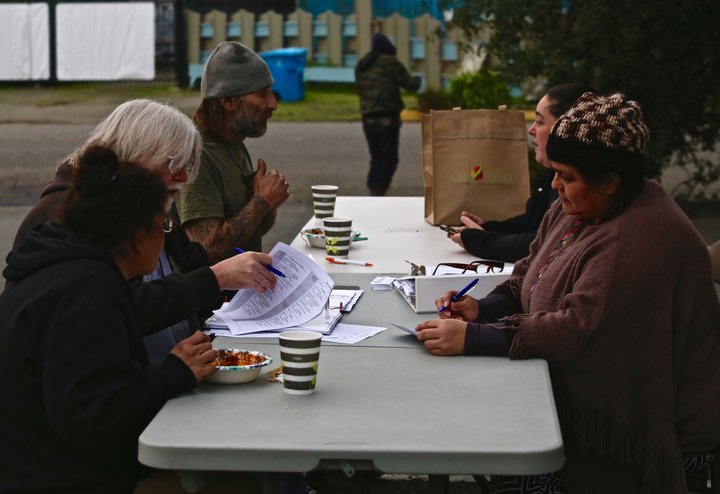
DHHS workers survey local homeless people.
Benzonelli said volunteers and DHHS staff have worked hard to conduct an accurate count this year and to connect homeless people with available services. The fact that some don’t take advantage of those services troubles her.
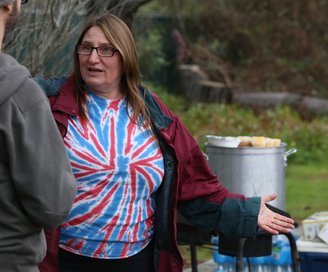
Benzonelli
“I feel like there’s a disconnect in the community and I haven’t put my finger on it yet,” she said. “These folks are coming over here today. They’re talking to the folks from DHHS. They’re finding out about the resources that are available. I talked to a gentleman over here, he’s got a huge lump on his neck, like a broken back or scoliosis or something.
He told Benzonelli that he’d never been on disability or signed up for food stamps or CalFresh.
“To me there’s no excuse why everybody in this situation shouldn’t have access to the resources that are available,” she said.
DHHS Director Connie Beck told the Board of Supervisors on Tuesday that the count isn’t as easy as it sounds, but she’s confident.
“I believe that we’re going to do the best job possible getting a more accurate number than we’ve had in the past,” she said.
CLICK TO MANAGE